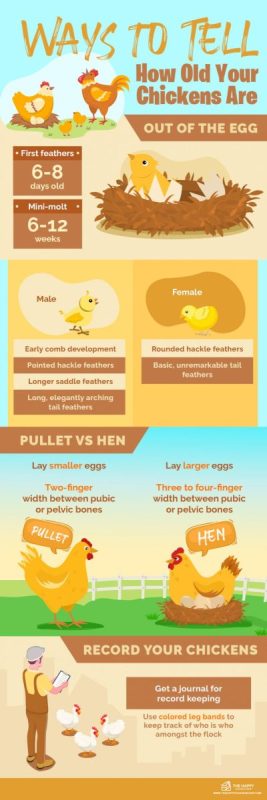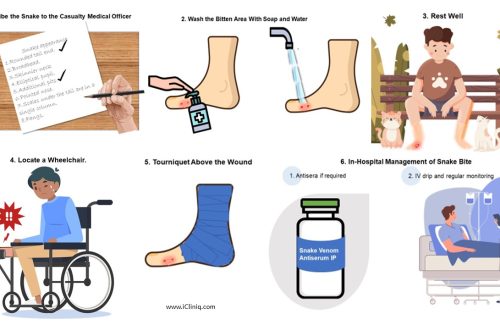
ווי צו באַשטימען די עלטער פון הענס און לייַערס, וואָס מעטהאָדס פון פעסטקייַט עקסיסטירן
Breeding chickens is a popular and very profitable business. Basically, breeders who are just starting their business want to buy already adult laying hens, as there are some difficulties in raising young animals, and also, of course, because of the desire to profit from chickens in the form of their eggs.
But how to determine the age of the chicken itself, so as not to be deceived and buy not old chickens, but the youngest and most laying hens? This question is asked by many newbies. We will talk about this in our article.
ינהאַלט
How to determine the age of a chicken
Everyone understands that only young chickens give a large number of eggs, while older chickens are useful only for broth. עס זענען עטלעכע וועגן., by which it is possible to determine the age of laying hens, but, unfortunately, they give a very vague accurate indicator of the age of hens.
Basically, as practice shows, chickens lay well only in the first years from birth, and then there is a natural decrease in egg production. The laying hen, if she doesn’t go to the kitchen, it’s quite live for about fifteen years, but, as the experience of breeding a household shows, in the fifth year of the life cycle, hens completely stop laying.
Useful notes
Determining how old a laying hen is not so problematic. Many of the most common methods are known, however, their problem is that they do not provide us with an exact answer. All the methods described below only roughly indicate the age of the hen itself, but only the seller himself can tell more accurate data, of course, if he is not being cunning. As for truthfulness, we will try, as they say, to shoe you so that you buy the copy of the chicken you need.
Due to the fact that in the first year of life, laying hens give good egg production, most farmers who only sell eggs, keep laying hens all year. As a rule, after that they are replaced by a new younger generation.
Belly and folds
The first and main sign of a chicken’s age is its belly. If you can feel it on your stomach layer of adipose tissue and it is firm, which means that the chicken is already in years. Over the years of her life, laying hens gradually gain weight, as they gain weight, while becoming noticeably lazier, gaining a large subcutaneous layer of fat.
In fact, if the laying hen is young, then she is very active. She tries to get to the feeder first, while the old hens keep apart on the sidelines and move little around the aviary.
If you need to purchase young chickens, be sure to feel their brisket and stomach. If, when palpated, they elastic but soft, in the abdomen and brisket, then these chickens will still please you in productivity, since they have not yet reached the critical point of egg production decline. However, do not forget that a fat hen will look great on a festive table. As a rule, first the owners of young chickens keep them for eggs, and then they are sent to the kitchen.
Scallop color
Another reliable and very good way to check maturity:
- lobes,
- scallop.
In young laying hens up to about three years old, they have העל רויט קאָליר and if you feel them, they are warm. Active young layers have an excellent blood supply, so the comb and lobes are warm to the touch. In older laying hens, the scallops and lobes are matte in color, already duller and cold to the touch. The blood supply of the body is disturbed over the years, and therefore a weak color and heat transfer.
Laying weight
Weight is another significant sign of the old age of a chicken. However, nowadays this fact is of a dubious nature, since it is less true. In young chickens of different species, weight can be gained in different ways during the year. Some breeds can quickly gain weight, others more slowly. Therefore, it is rather problematic to count on this sign as unmistakable. But knowing the breed that you want to purchase according to standard live weight standards, you can almost accurately determine the age of the chicken.
Beak color and paw condition
The color of the beak, like the color of the scallop itself, can help you choose, as it is an indication of the age of the chicken. In young chickens, he always bright light colors and slightly yellowish. But in older laying hens, the stratum corneum on the beak is duller in color and grayish in color.
As for the condition of the paws, they are coarse in appearance with growths and also with large corns. What tells us about the great age of the laying hen. In young laying hens, just the opposite, up to two years of age, their paws are without scales, clean and free of keratinized parts. Paws uniform in color and smooth.
If you pay attention to the paws of old chickens, namely the soles, you can see many deep cracks. In young laying hens, the cracks are smaller and the skin on the paws is much better. By and large, the skin on the paws of laying hens is scaly and in young chickens the scales fit quite tightly to each other. The scales are small in size and their surface is smooth.
As practice shows, experienced livestock farmers can almost accurately indicate the age of the laying hen. Therefore, if there is an opportunity to get acquainted with such a person, then when buying a laying hen, use his advice. However, we hope that our article will be useful and practical for you in your choice. Just a few simple nuances will help you choose the right layer for your household. Good luck to you in this field.





